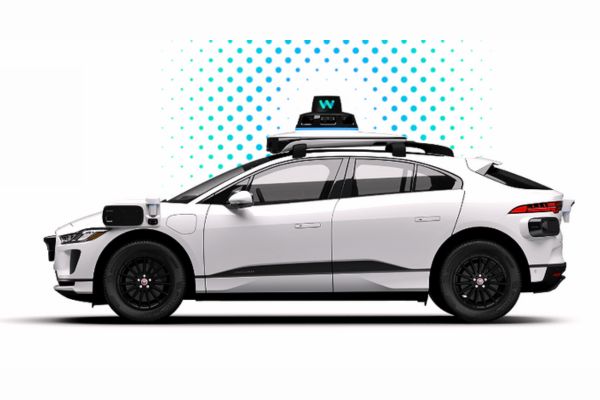For many years, specialists have debated the impact of this technology on our daily lives in relation to self-driving automobiles. Some view this technology as a revolutionary innovation that will transform the way we live and travel, while others are more concerned about the risks and difficulties associated with self-driving vehicles.
In an interview, Moritz Dechant, a Bosch expert on self-driving cars, discussed the future of autonomous driving (self-driving vehicles) and what we can expect from this technology in order to help us better comprehend it.
What is Autonomous Driving Technology?
Autonomous driving technology is a collection of sensors, algorithms, and software that enables vehicles to drive themselves. These systems use a combination of cameras, radar, and lidar sensors to detect and respond to their environments, enabling the vehicle to make decisions and navigate the road autonomously.
The capability of autonomous driving technology to increase road safety is one of its primary benefits.
Every year, about 1.3 million people die due to road traffic crashes and between 20 and 50 million more people get injured, many of them becoming disabled. These facts were reported by the World Health Organization. However, self-driving cars have the potential to reduce the number of accidents caused by human error, such as driver fatigue and distraction.
What are the levels of autonomous driving technology?
There are six levels of autonomous driving technology, each representing a distinct degree of automation.
Level 0: No Automation
This level of automation represents a vehicle that is operated solely by a human driver. No automated features or systems are present.
Level 1: Driver Assistance
The vehicle, at this level, is equipped with automated features such as cruise control, lane departure warning, and emergency braking. Nevertheless, the driver remains responsible for controlling the vehicle.
Level 2: Partial Automation
This level of automation describes a vehicle with the ability to control its speed, steering, and acceleration in certain situations, such as on the highway. However, the driver must remain vigilant and prepared to assume control of the vehicle in the event of an emergency.
Level 3: Conditional Automation
At this level, the vehicle can drive itself in certain situations, such as on the highway, but the driver must be prepared to assume control if necessary.
Level 4: High level of automation
This level of automation denotes a vehicle that can operate itself in the majority of situations, but the driver may be required to intervene in certain circumstances.
Level 5: Full Automation
At this stage, the vehicle is entirely autonomous and can function without human intervention.
What are the benefits of self-driving cars?
There are numerous ways in which self-driving automobiles have the potential to revolutionise the way we live and travel. Here are some of the most important advantages of this technology:
Improved Road Safety:
Road accidents have a significant impact on individuals, families, and entire nations, leading to economic losses; in fact, road traffic crashes cost most countries around 3% of their gross domestic product.
One potential solution to this is self-driving cars. They can help decrease incidents caused by human error, which could make roads safer for all drivers and passengers.
Increased Accessibility:
Autonomous vehicles can increase accessibility for people with disabilities or who are unable to drive due to age or health.
Reduced Traffic Congestion:
Autonomous driving technology can enhance traffic flow and reduce traffic congestion, resulting in shorter commute times and less driver frustration.
Improved Environmental Impact:
With features such as electric powertrains and more efficient navigation algorithms, self-driving cars can be designed to be environmentally friendly.
What are the Challenges of Self-Driving Cars?
Self-driving cars have numerous advantages, but there are also significant obstacles that must be overcome before this technology becomes widespread. Here are some of the primary obstacles:
Regulatory Frameworks:
Currently, there are no standardised regulations for autonomous vehicles, which can contribute to confusion and legal challenges for automakers and consumers.
Cybersecurity Threats:
Autonomous vehicles rely significantly on software and data systems, which are susceptible to cyber-attacks and hacking attempts.
Ethical Considerations:
Self-driving cars are programmed to make decisions in certain scenarios, which can raise ethical questions about who is responsible.
Self-driving car brands:
Tesla is one such brand, offering a variety of self-driving automobiles equipped with advanced capabilities such as Autopilot, which allows the car to traverse highways and park itself.
Waymo, a subsidiary of Alphabet, Google’s parent firm, is another well-known brand in the self-driving car business. Waymo has been testing driverless vehicles on public roads since 2015, logging over 20 million kilometres.
General Motors, through its subsidiary Cruise Automation, has also entered the fray. The business is developing a completely autonomous car that can safely transport passengers without a driver.
Other key participants in the self-driving car market include Uber, which is developing its own autonomous vehicle technology, and Ford, which has spent heavily in the development of self-driving cars.
As self-driving cars become more widespread, it will be interesting to observe which brands emerge as leaders in this exciting new industry.
Read more on How machine learning algorithms teach self-driving cars to see the world





















